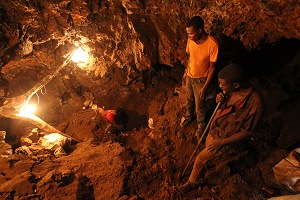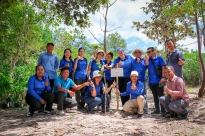Esri India’s MD Unveils Insights

Mr. Agendra Kumar, Managing Director of Esri India, sheds light on how Geographic Information Systems (GIS) are transforming resource management practices. In an exclusive interview with TimesTech, he explores the integration of geospatial technology in industries like mining and forestry, offering unparalleled advantages over traditional methods.
Read the full interview here:
TimesTech: How does GIS technology enhance resource management in industries like mining and forestry, and what advantages does it offer over traditional methods?
Mr. Agendra: Traditional maps have served as a valuable tool for geographic visualization for centuries, however, Geographic Information Systems (GIS) offer a more sophisticated approach. GIS enables the integration of various spatial data layers such as land cover, topography, soil type, and vegetation, facilitating comprehensive spatial analysis. This analysis helps in understanding the relationships and patterns within natural resources, aiding decision-making processes.
Being a ubiquitous technology, GIS integrates seamlessly with disparate data sources such as satellite imagery, LiDAR (Light Detection and Ranging), aerial photography, and GPS. This helps in providing valuable information for natural resource management. GIS-based modeling techniques enable the simulation of various scenarios related to natural resource management, such as the impact of climate change, urban expansion, or deforestation on ecosystems. These predictive models assist in identifying potential future challenges and devising proactive measures to mitigate them.
GIS streamlines data management and analysis processes, reducing the time and resources required for traditional manual methods. By automating tasks such as map production, data integration, and spatial querying, GIS enhances efficiency and cost-effectiveness in natural resource management activities.
Esri’s ArcGIS System empowers decision-makers to manage natural resources more effectively. For instance, through our forest management solutions, we have made it easier for stakeholders to monitor forest health, create inventories of forestry data, and also analyze ecological parameters. Forest departments are now looking at scaling up their existing technology infrastructure to set up GeoHubs for a more coordinated approach to sustainable forest management as well as driving inclusive participation with larger stakeholder communities including citizens.
TimesTech: How can GIS technology help in overcoming the challenges associated with remote sensing data?
Mr. Agendra: GIS technology helps in integrating many types of data, including remote sensing data, whether it is from earth observation satellites, drones, or other aerial methods. Elevation and land cover data which is obtained through remote sensing is very important for many applications; having this data in GIS makes it easy to use in applications.
Remote sensing data is usually voluminous and requires time and a large IT infrastructure for processing and storage. It becomes imperative to get maximum value out of the investment made in this data. This is where GIS technology plays a complementary role with remote sensing data by providing tools for data integration, spatial analysis, visualization, data management, modeling, simulation, and decision support, thereby helping to overcome the challenges associated with remote sensing.
Esri’s ArcGIS includes capabilities for visualizing, managing, processing, and analyzing imagery and raster data. ArcGIS Image Analyst provides more advanced image analysis capabilities and ArcGIS Image Server comes in handy for serving the image data for users and applications.
Going forward with the easy availability of SAR data, the role of GIS and image processing technologies will become even more vital.
TimesTech: As the Managing Director of Esri India, how do you foresee the future of sustainable resource management in India with the ongoing integration of geospatial technology?
Mr. Agendra: The integration of geospatial technology holds immense potential for advancing sustainable resource management practices in India across various sectors. Geography is at the heart of a resilient and sustainable future. If we specifically talk about forests, geo-enabled forest governance holds the key to solving the Earth’s most pressing challenges with geographic expertise. With the ability to visualize and analyze along with advanced spatial analytics, geo-enabled forest governance empowers forest stakeholders and policymakers to further strengthen their forest management efforts to restore our forest ecosystems sustainably.
GIS-based resilience frameworks are incredibly powerful for communicating, analyzing, and sharing information for solving complex problems. GIS powers the nation’s resilience infrastructures with – risk information and analytics, hyperlocal hazard detection and early warning systems, scalable data analytics, tools for decision support, and action on the ground which enable timely interventions toward strengthening resilience and adaptability. As an intelligent nervous system with enhanced situational awareness, through its data-driven insights, GIS aids in sensing the health of ecosystems to plan and prepare and provides tools to respond and recover. Be it forestry, mining, water resource management, or energy management, GIS empowers the stakeholders with data insights and tools. It plays a key role in facilitating planning, managing, and monitoring these subjects efficiently and effectively.
Esri India’s Indo ArcGIS offers specially curated solutions for solving some of the most pressing challenges of natural resource management in India. These unique solutions for burnt area assessment, forest fire management, water resource management, forest plantation management, disaster management, land management, etc. are paving the way for sustainable natural resource management in India. These solutions are supported by 900+ layers of data through the Indian edition of ArcGIS Living Atlas.
TimesTech: Could you share specific case studies where Esri India’s GIS solutions have made a significant impact on natural resource management, fostering both environmental conservation and economic development?
Mr. Agendra: Many state government departments have already been using GIS technology for forest management practices such as wildlife management, joint forest management, plantation/afforestation activities, forest fire management, protected area management, commercial forestry, and more. MP Forest is using ArcGIS for a central dashboard for forest monitoring, mapping entire forest boundaries and correcting them vis-a-vis revenue boundaries, utilizing mobile-based GIS for data collection, incident management, and tracking beat guard movement. This is largely helping in sustainable forest management.
Adani Natural Resources is using Esri’s ArcGIS to make informed decisions in mining. The System is helping in:
- Contiguous acquisition and tracking of land in areas of interest demarcated by mine planners designated to certain activities like mining, dumping, or infrastructure areas.
- Infrastructure planning. GIS applications integrate geological model databases, surface features, and existing mining features to suggest suitable infrastructure areas.
- Monitoring large mining landscapes from drone data and tracking land reclamation details, vegetation planning, vegetation health growth, and mining operations.
- Exploration planning in undulated topography and tracking exploration progress through GIS dashboards and analytics.
- Monitoring of safety and environmental parameters in the mining area.
- Effective evacuation and logistics planning.
Esri’s ArcGIS is playing a crucial role in the conservation efforts of the Ganga River. The GIS-based ‘Web Centric Water Quality Dashboard’, used by the National Mission for Clean Ganga (NMCG) authority aids in effectively assessing the current state of the Ganga River, identifying pollution sources, and planning conservation strategies.
Esri India’s solution is also helping the National Water Informatics Centre (NWIC) to foster both environmental conservation and economic development. Powered by ArcGIS, the India-Water Resource Information System ensures the provision of reliable, timely data and insights for comprehensive future water projections. The System supports informatics-based sustainable development in water resource management, delivering value-added products and services to all stakeholders.




